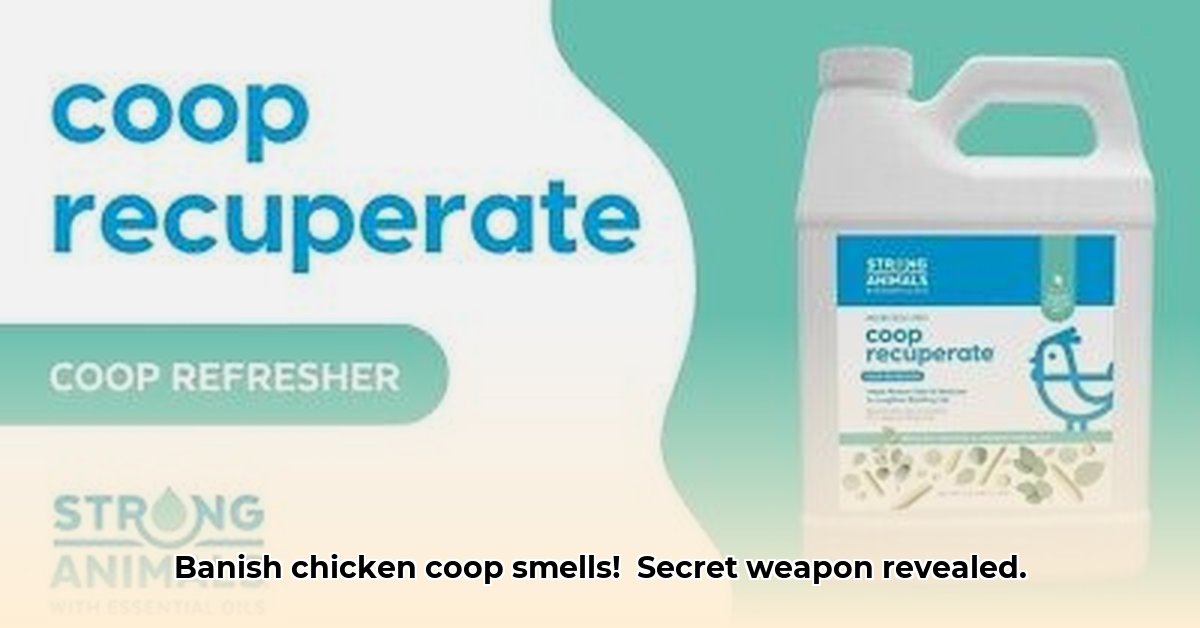
Coop Refresher Tractor Supply: Taming the Chicken Coop Stench
Chicken coops, while charming havens for feathered friends, can sometimes present an olfactory challenge. That pungent ammonia smell isn't just unpleasant; it can also indicate potential health concerns. This review examines Sweet PDZ, a product readily available at Tractor Supply and increasingly popular among poultry keepers for odor control. We'll explore its efficacy, provide clear instructions for use, and compare it to other options. For those starting their flock, check out chick prices at Tractor Supply. Whether you're a seasoned poultry farmer or a backyard chicken enthusiast, this guide will empower you to create a healthier, more pleasant environment for your flock.
Sweet PDZ: A Deep Dive into Poultry Odor Control
Sweet PDZ, originally formulated for equine applications, has gained traction among poultry farmers seeking effective odor management. Many online testimonials highlight its purported ability to reduce ammonia levels and improve overall coop air quality. However, it's crucial to acknowledge a significant limitation: comprehensive scientific studies directly comparing Sweet PDZ to other poultry odor control solutions are lacking. Therefore, while anecdotal evidence is promising, it lacks the robust backing of rigorous scientific research.
Sweet PDZ: Granular vs. Powder – A Comparative Analysis
Sweet PDZ is available in two forms: granular and powdered. Based on widespread user feedback, the granular form generally enjoys greater popularity. Many users find it easier to apply evenly, resulting in more consistent odor reduction. The powdered version, while often more economical, presents challenges due to its tendency to create dust, particularly problematic in enclosed spaces. Though user experience generally favors the granular form, direct comparative studies on efficacy are currently unavailable. Price comparisons between the two forms and any potential poultry-specific versions also vary depending on retailer and volume.
Putting Sweet PDZ to Work: A Step-by-Step Guide
This practical guide focuses on the granular form of Sweet PDZ, generally considered easier to use in poultry applications. Always refer to the product label for specific instructions and safety precautions.
Assessment: Estimate the required amount of Sweet PDZ based on your coop's size and the number of chickens. Larger coops and larger flocks naturally require more product.
Even Distribution: Sprinkle the granular Sweet PDZ evenly across the coop floor, concentrating on areas with high manure accumulation. Strategic placement maximizes efficacy.
Monitoring and Maintenance: Regularly check the effectiveness of Sweet PDZ. Depending on coop size, flock size, and cleaning frequency, you may need to reapply more frequently. Regular monitoring allows for adjustments based on your specific needs.
Responsible Disposal: Dispose of used Sweet PDZ and manure according to your local regulations. Proper disposal is crucial for environmental protection.
Weighing the Pros and Cons: Is Sweet PDZ Right for You?
Here's a concise summary of Sweet PDZ's advantages and disadvantages to aid in your decision-making process:
| Pros | Cons |
|---|---|
| Readily available at Tractor Supply and other retailers | Limited scientific research specifically for poultry coop use |
| Positive user testimonials suggesting odor reduction | Potential long-term environmental impact not fully understood |
| Granular form generally easier to apply | Price may vary depending on form, retailer, and packaging size |
| Relatively cost-effective | May require more frequent application than other methods |
Beyond the Review: The Need for Further Research
While Sweet PDZ shows promise based on user experiences, the lack of rigorous scientific studies necessitates further investigation. To advance our understanding of poultry odor control:
Citizen Science: Poultry keepers can contribute by documenting their experiences using Sweet PDZ, including coop size, flock size, application rate, and observed odor reduction. Sharing this data online could create a valuable collective dataset.
Collaborative Data Sharing: Actively participate in online forums and communities, sharing both positive and negative experiences to establish a broader understanding of Sweet PDZ's efficacy.
Manufacturer Collaboration: Encourage manufacturers to conduct comprehensive scientific studies, comparing Sweet PDZ to other odor control solutions specifically within the context of poultry coops.
Understanding Sweet PDZ's long-term environmental impact is also critical. Responsible poultry farming requires a commitment to sustainable practices. Through a combined effort of experimentation, data sharing, and collaboration, we can collectively contribute to a more informed and effective approach to managing poultry coop odors.
How to Choose Between Sweet PDZ Granular and Powder for Optimal Results
Choosing between granular and powdered Sweet PDZ depends largely on individual priorities. Granular Sweet PDZ generally offers superior ease of use and reduced dust, while the powdered version tends to be more economical. Consider the size of your operation, your budget, and your sensitivity to dust when making your choice. Further research is needed to fully understand the impact of either form on the beneficial microbial communities within deep litter systems.